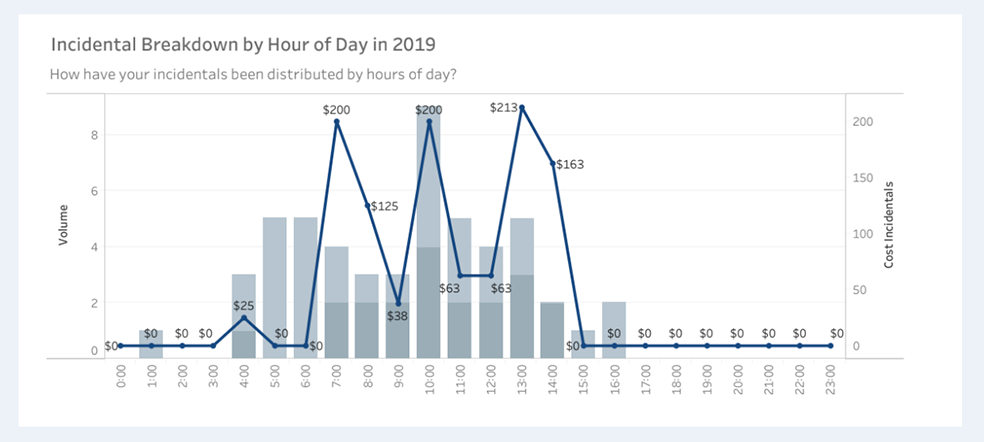6 ways a digital freight network can help shippers during COVID-19
Carriers, Industry Insights, Shippers • Published on April 17, 2020
In its April 2020 report, Gartner advised supply chain technology leaders to explore digital freight networks and associated technologies to address current challenges and further disruptions to transportation that are caused by COVID-19.
According to Gartner analyst Bart De Muynck, “Digital freight networks can help companies that are looking for real-time available capacity or looking to reduce transportation costs during the current crisis, as well as during future challenging times.”
So what are the benefits of a digital freight network? Here are six ways Convoy’s digital freight network (DFN) has helped shippers during the first months of the COVID-19 crisis.
1. Reliable and flexible truck supply
“Digital freight networks are helping shippers overcome COVID-19 challenges by delivering the reliability of an asset-based carrier and the flexibility of a broker,” according to Gartner.
This combination of reliability and flexibility proved useful to shippers in March 2020, when consumers flooded supermarkets to purchase food and household supplies.
To meet surges in demand, shippers required more freight coverage on primary lanes than they initially predicted. Convoy automatically scaled its capacity to meet demand through our network of tens of thousands of carriers.
As asset carriers and brokers couldn’t reposition trailers or respond to quickly shifting demand, backup and spot shipment volume spiked. During this time, Convoy saw a 100-150% increase in same-day tenders for pickups. Because our digital freight network automates the brokering process, we were able to scale where it was needed to fulfill the increase in demand and adapt to market changes.
2. Quality carriers
Shippers want to work with trusted carriers and achieve high reliability for on-time pickup and delivery (OTP and OTD). During the unprecedented nationwide demand shocks over the last couple of months, you might expect service levels to suffer.
Instead, our network was able to adapt and deliver even higher levels of performance on OTP and OTD during the crisis than in the preceding weeks.
This performance can be attributed to both the underlying technology (the machine learning, automation, and smartphone apps of Convoy’s platform) and our network of high-quality carriers and drivers. We’ve spent years investing in the growth of our carrier network, implementing industry-leading safety, quality, and compliance checks across multiple services such as FMCSA, SaferWatch, RMIS and TIA Watchdog to ensure our carriers are compliant, reliable, and safe.

3. Shipment and facility insights
Real-time analytics can help shippers improve the efficiency of their supply chain. Convoy’s digital freight network provides visibility into every step of the shipping process, and provides customized reporting on factors that most impact costs to freight transportation: appointment lead times, appointment windows, OTP and OTD by reason, facility performance, and more.

These insights are particularly useful in the midst of the current pandemic. We’re currently working with shippers to analyze how their facilities across the country are performing during the crisis. This can help logistics teams understand how their supply chain is performing compared to others in their industry, identify inefficiencies, and adapt to improve supply chain operations.
4. Time savings on transportation management
Shippers have demanding schedules, and their time is even more critical during times of uncertainty. Any time that can be saved managing your routing guide, communicating with carriers, and booking shipments frees you up to focus on higher value tasks.
Convoy’s Shipper Platform lets shippers tap into our digital freight network. Shippers see instant upfront pricing, can book a load with only a few clicks, and track their shipment every step of the way.
5. Transparent contract, backup, and spot pricing
Shippers want to save time and money while getting reliable and flexible access to capacity. Convoy helps you achieve this through the use of technology that automatically bids, prices, and makes real-time tender decisions for contract, backup and spot freight.
While the majority of shipment volume is contracted through an annual freight RFP process, the COVID-19 crisis created sudden and unexpected demand surges, reinforcing the need for reliable backup and spot options.
Convoy’s dynamic pricing offering provides real-time market rates with guaranteed freight coverage for loads. Loads tendered with this system are instantly bookable, meaning that shippers no longer need to wait hours for a carrier to accept or reject a load. FreightWaves describes dynamic pricing as another example of how Convoy is, “leveraging its superior data and technology to attack the transportation industry’s pain points.”

6. Supply chain resilience in volatile markets
The direction of truck rates has received a lot of news coverage in the past two months. With ongoing uncertainties in supply, demand, and the global economic environment, the freight industry should expect more price volatility in the year ahead.
Convoy’s digital freight network is fully automated, making it well suited for these volatile environments. Automated truck matching, pricing, and tender acceptance enable our network to instantly adapt to demand shocks.
Our digital freight network has proved resilient over the past two months, and it will serve shippers well in the years ahead.
“Digital freight networks can help companies that are looking for real-time available capacity or looking to reduce transportation costs during the current crisis, as well as during future challenging times.”
Gartner’s April 2020 Report: “How Digitized Freight Platforms and Other Transportation Technologies Can Help With Current Domestic Transportation Capacity Challenges”
If you’re interested in learning more about digital freight networks, now is the best time to get started. Sign Up with Convoy today.
Read Convoy’s Guide to Developing a Freight Transportation Strategy.



